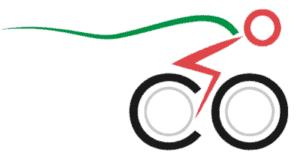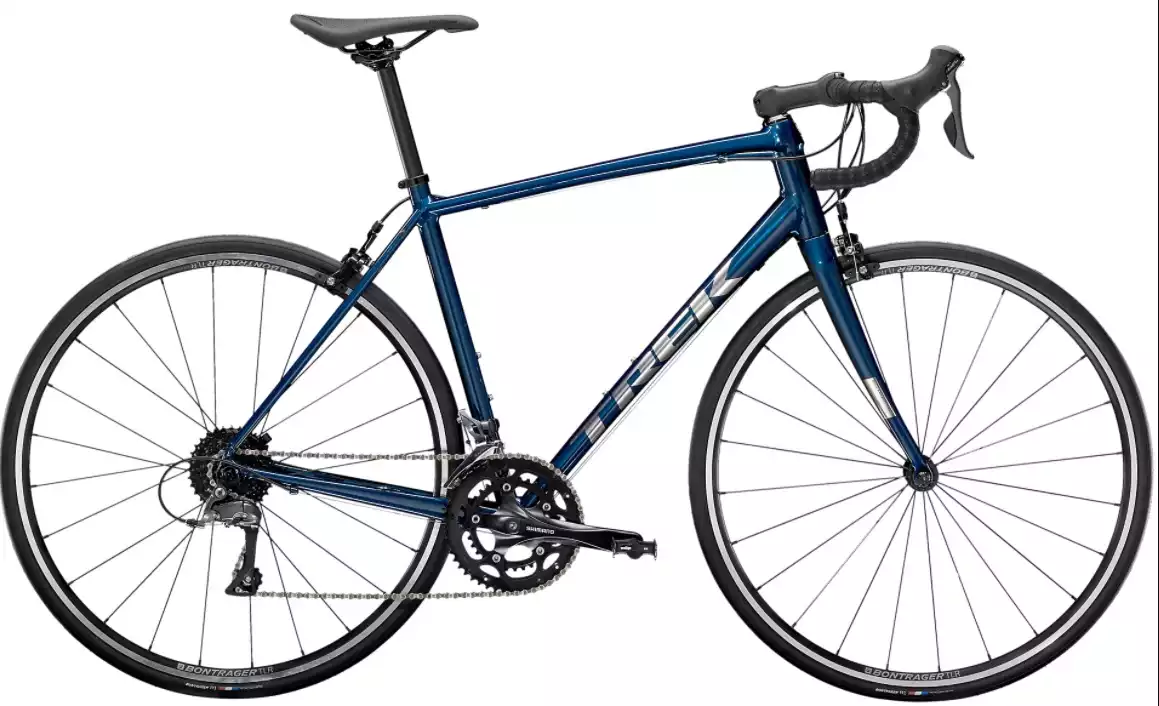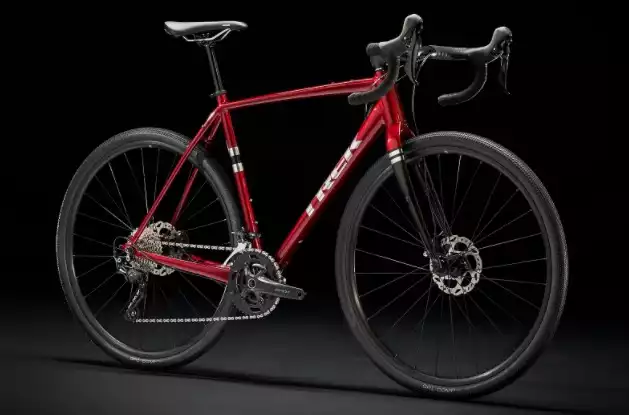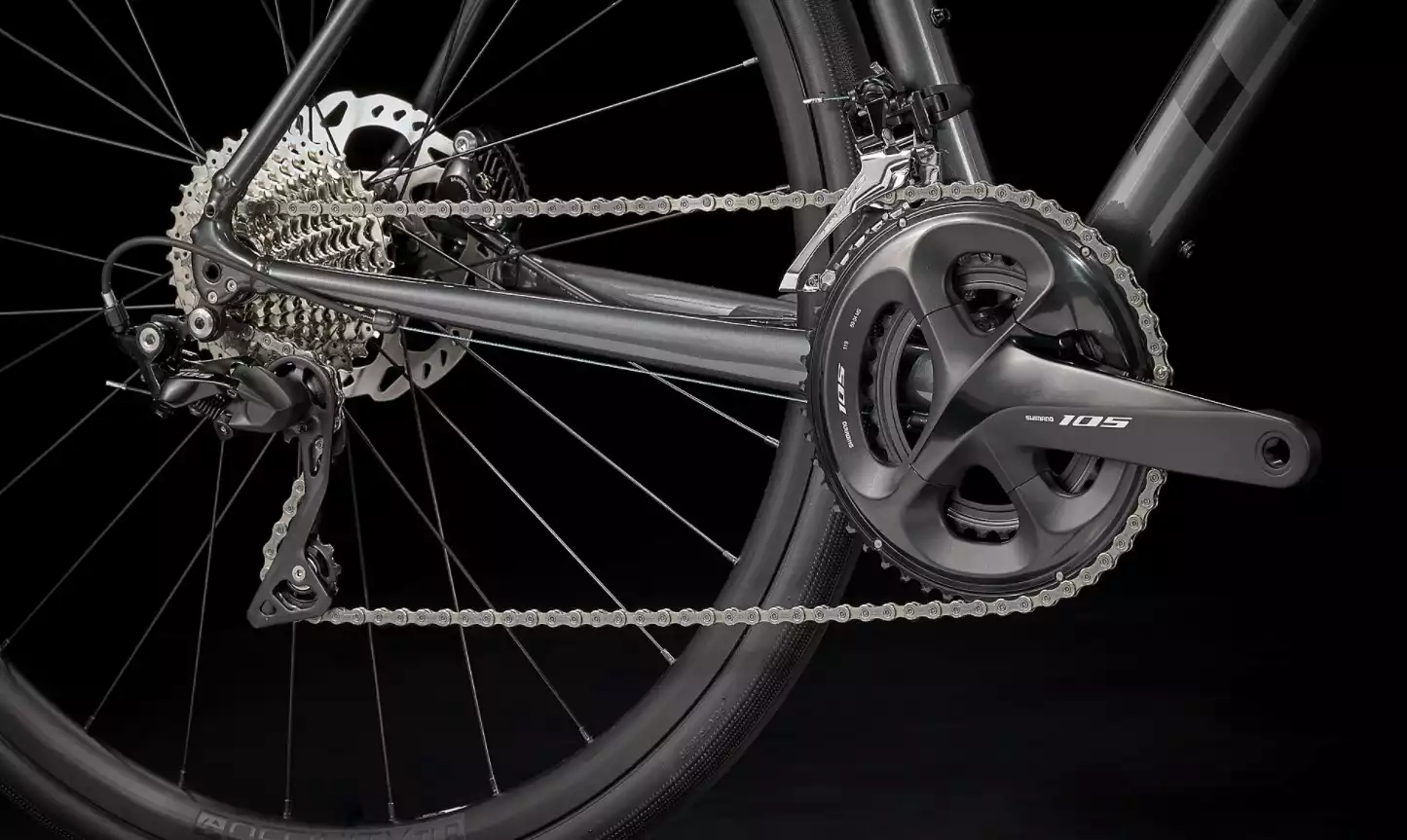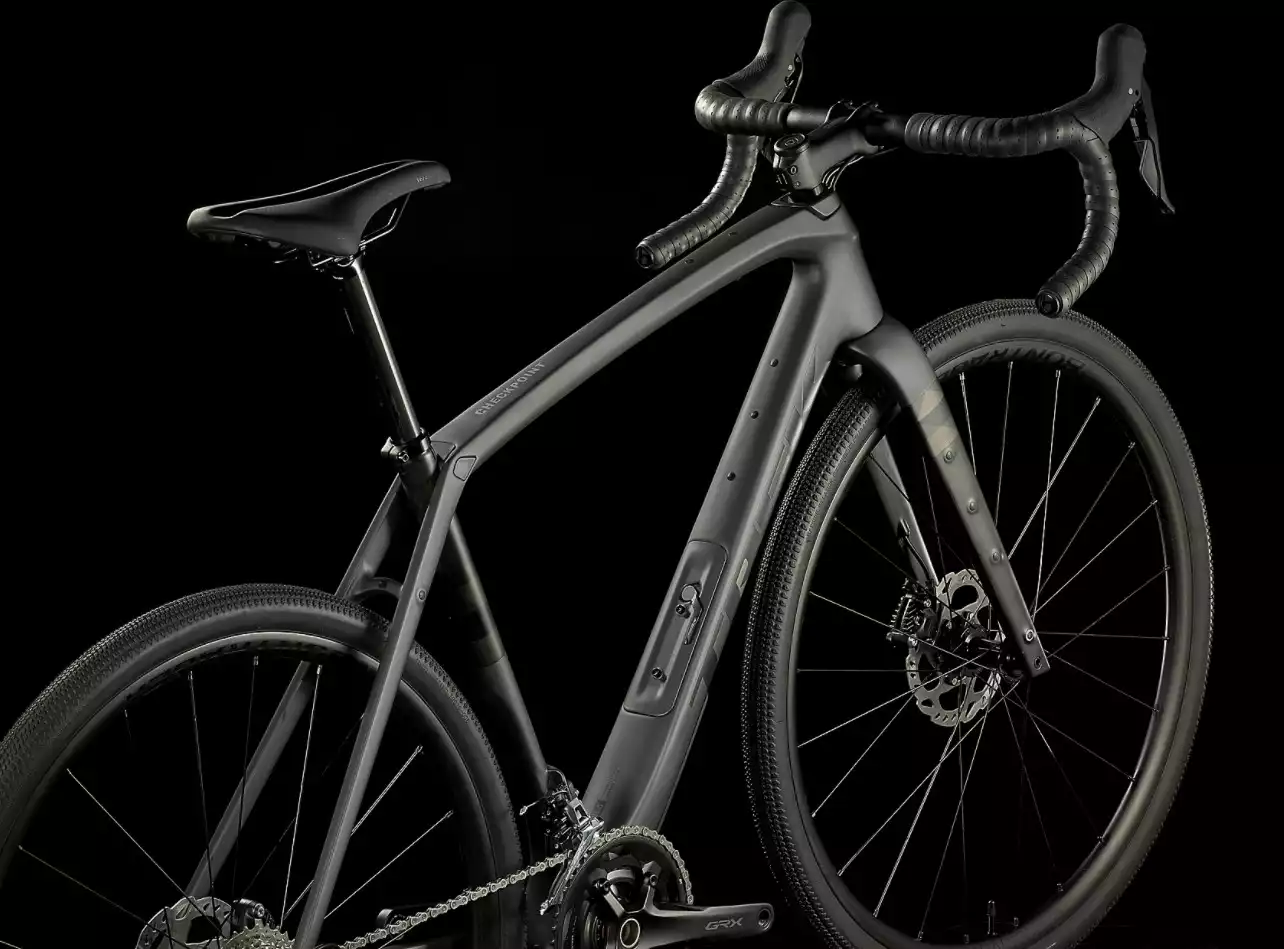Trek has created two amazing bikes built for adventures, both on and off-road. The Checkpoint and the Domane are two of Trek’s best-selling bikes. But which one is right for you?
The Trek Checkpoint is primarily a gravel bike with enough flexibility to be ridden like a road bike while the Domane is primarily a road bike that was created to be taken off-road, as well. The extra ruggedness of the Checkpoint comes at a higher price tag than the Domane. We’ll go over the different components of some of the models of each, starting with the price.
This article will examine the differences between the Checkpoint and the Domane. We’ll take a look at all of the components from frame material, geometry, brakes, gearing, wheels, and price points to help you understand the differences between the two bicycles.
Domane Vs Checkpoint
Let’s take a big-picture look at some of the similarities and differences between the Domane and the Checkpoint.
Electric bikes built for everything and priced for everyone. Shop Rad Power Bikes, America's #1 electric bike brand. Get out. Go further. Ride Rad.
| Domane | Checkpoint | |
| Primary Use | Road | Gravel |
| Geometry | Race | Endurance |
| Internal Cable Routing | Yes | No |
| Tire Clearance | 38c | 45c |
| Frame Storage | Yes | Yes |
| Iso Speed | Yes | Yes |
Trek Domane Models
Here’s a select number of Domane variants and what they offer.
| Bike | Price | Frame Type | Fork | Gearing | Brakes | Wheels | Best for |
| Domane AL2 | $1,029.99 | Aluminum | Carbon | 8 Speed Shimano Claris 2x | Caliper | 700X 28, Max 28 | Entry-level road |
| Domane AL 5 | $2,029.99 | Aluminum | Carbon | Shimano 105 11 Speed, 2x | Hydraulic Disc | 700x 32, Max 35 | Entry-level road with high-end components |
| Domane SL5 | $3,229.99 | Carbon | Carbon | Shimano 105, 11 Speed 2x | Hydraulic Disc | 700 x 32, Max 38 | Endurance Road |
| Domane SL6 eTap | $4729.99 | Carbon | Carbon | SRAM Rival eTap AXS, 12-speed | Hydraulic Disc | 700×32, Max 38 | Endurance Road |
| Domane+ hp | $7499.99 | Carbon | Carbon | Shimano GRX 11 Speed Ebike | Hydraulic Disc | 700 x 35, Max 38 | Endurance Road Ebike |
This is Trek's entry-level road bike with a respectable groupset for its price. A perfect choice for those dipping their toes into the world of road cylcing.
Trek Checkpoint Models
Here’s a select number of Checkpoint variants at different price points.
| Bike | Price | Frame | Fork | Gearing | Brakes | Wheels | Purpose |
| Checkpoint ALR 4 | $1699.99 | Aluminum | Carbon | Shimano Tiagra 2x | Hydraulic Disc | 700 x 40 | Entry Level Gravel and Commuting |
| ALR 5 | $2429.99 | Aluminum | Carbon | Shimano GRX 2x | Hydraulic Disc | 700 x 40, up to 45Tubeless Ready | Great Value gravel bike |
| SL 6 | $3999.99 | Carbon | Carbon | Shimano Ultegra 11 Speed 2x | Hydraulic Disc | 700 x 40, tubeless-ready | All road |
| SLR7 Etap | $8349.99 | Carbon | Carbon | SRAM 12 Speed 1x | Hydraulic Disc | 700 x 40 tubeless ready | Gravel Racing |
This is Trek's entry-level gravel bike. It's a solid choice for all beginners and most enthusiasts. It has reliable shifting and powerful brakes.
The Checkpoint has more mounts to hold your gear, while the Domane primarily has just a few for water bottle cages. The Checkpoint also has wider tire clearance to adjust the tire’s size to fit the terrain, while Domane has thinner, faster tires.
The Trek Checkpoint is primarily a gravel bike with enough flexibility to be ridden like a road bike. The Domane, however, is primarily a road bike that was created to be taken off-road, as well.
We’ll go over the different components of some of the models of each, starting with the price.

Price Points
Budget is always an important consideration when purchasing a new bike. Both the Checkpoint and the Domane are available in a variety of price points.
The prices of the Domane run from around $1000 to over $8000, depending on the model. The lower-end models will have aluminum frames, which costs less to produce. They’ll also have lower-end components, such as Shimano Claris.
High-end components, such as Shimano 105 are available at higher price points. Your bike will still shift fine, it just won’t have as many gears, and the gearing might be a little bit heavier.
The prices of the Checkpoint, on the other hand, run from $1699 to over $12,000. The base Checkpoint model is a little more money than the base Domane because it comes standard with hydraulic disc brakes and Shimano GRX, which are better suited for gravel.

Geometry
The geometry of both the Checkpoint and the Domane is similar, but there are some differences.
Because the Domane is more geared towards road racing, the stack and reach are slightly shorter than on the Checkpoint. This geometry makes it a little more responsive, which some may interpret as twitchy. Although the Domane is marketed as a race bike, Trek also points out that the overall geometry of this bike is for endurance, so it is more comfortable for longer rides.
On the other hand, the Checkpoint has a slightly longer frame with a higher stack and longer reach. It’s a slight difference but will make the Checkpoint feel a little bit more stable in rough conditions such as loose gravel and sharp turns.
The interesting point on the geometry of these bikes is that the Domane has a lower bottom bracket than the Checkpoint. A lower bottom bracket means a lower center of gravity, which offers a bit of stability. Conversely, the higher clearance on the Checkpoint gives the bike a little more room for rough terrain.
If you want a little bit more of a race bike, go for the Domane, but if you want a little more of a gravel bike, go for the Checkpoint.
Frame Material
Both the Domane and the Checkpoint entry-level variants are made of aluminum, and if you want to opt for a full carbon bike, you need to spend at least 3300 dollars on the Domane SL5, whereas the cheapest full-carbon Checkpoint SL6 starts at 4000 dollars.
Generally, entry-level bikes are made from aluminum to give them a lower price. Aluminum provides a snappy ride, but it can feel harsh and bumpy, too. You might wear out a little bit faster with aluminum unless your bike comes with a carbon fork and seat post, which will help absorb some of the road chatter.
If you want a smoother, more compliant ride, you’ll want to invest a little bit more into a carbon frame. It’s lighter, more comfortable, and easier to handle, but they do cost more.
Both types of frames are suitable for road and gravel; it just depends on your budget and your personal preference.
Gearing
the Domane, like most road bikes, is geared to keep your perfect cadence, whether going uphill, downhill, or speeding across the flats. It has chainrings in the front, known as a 2x, and a cassette in the back with various cogs.
The entry-level Domane uses Shimano Claris, which is only an eight-speed bike. This is fine if you’re a beginner, but a more seasoned roadie will want the 11 or 12-speed cassette in the higher models. The higher-end Shimano parts are also lighter, which will help you shave off a little weight on the bike, too.
The Checkpoint, on the other hand, has more options. Some of the models come in a standard 2x drivetrain. However, a few models also come with the option of using a 1x drivetrain.
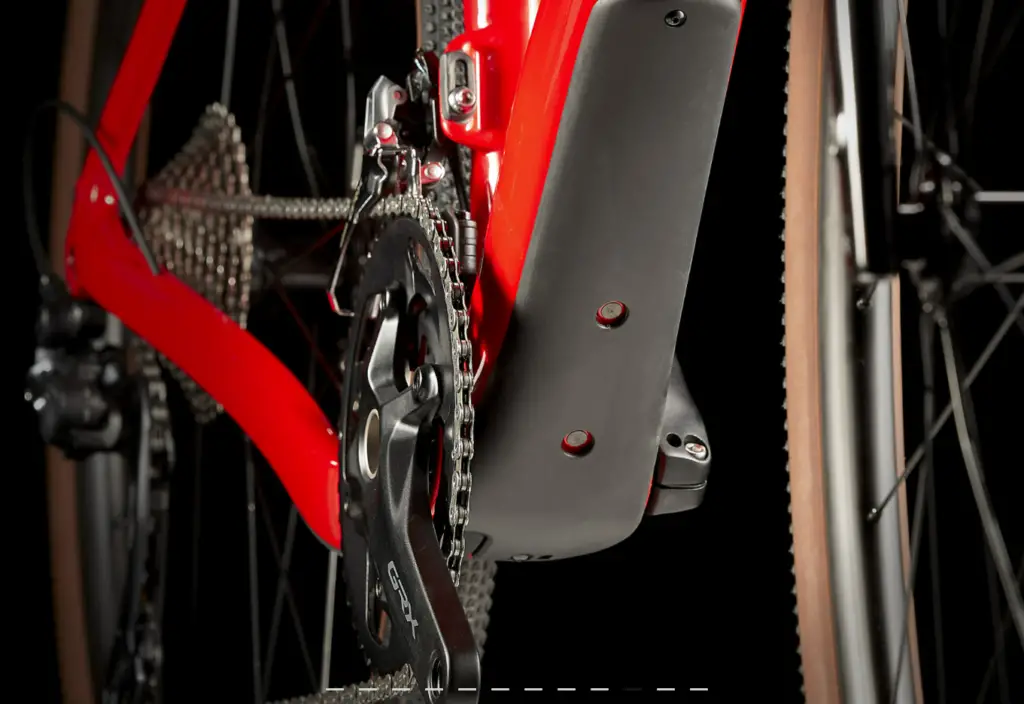
A 1x drivetrain on the Checkpoint is significant because it limits the number of gears you have and also means you need to tailor the gears even more specifically to your terrain. So you’ll either have gears aimed towards keeping that perfect cadence on the flats, gears that will get you uphill easily, or that will give you more speed heading downhill.
Brakes
Hydraulic disc brakes give you the most stopping power. The Domane offers rim brakes on their cheapest model, which is probably just fine if you are a beginner mainly riding flat roads or at least in good weather conditions.
However, if you’re hitting gravel or steep descents, you’ll want the higher-end Domane with the hydraulic disc brakes or the Checkpoint, which comes standard.
Wheels
The best thing about these bikes is the tire clearance. Trek turned the Domane into an all-road bike by giving it wider tire clearance. So if you want to ride on the road with an occasional gravel ride, you can simply swap out your road wheels for a pair of gravels in 38.
Beware though that the entry-level Domane has a smaller clearance because of the caliper brakes. It’s not going to be suitable for any serious gravel riding.
If your primary goal is gravel with occasional road rides, you can put up to 45c wheels on the Checkpoint, but swap them out for a pair of slicks when you meet up with your roadie friends.
Final Thoughts
If you’re primarily an adventurer at heart, the Checkpoint is a better option as it is mainly built for exploring trails, but if you’re first and foremost a speed lover, you should probably opt for the Domane. Once you’ve decided, which one best suits your riding style, you can go up the component charts as far as your budget and needs allow you to.
Happy pedaling!
